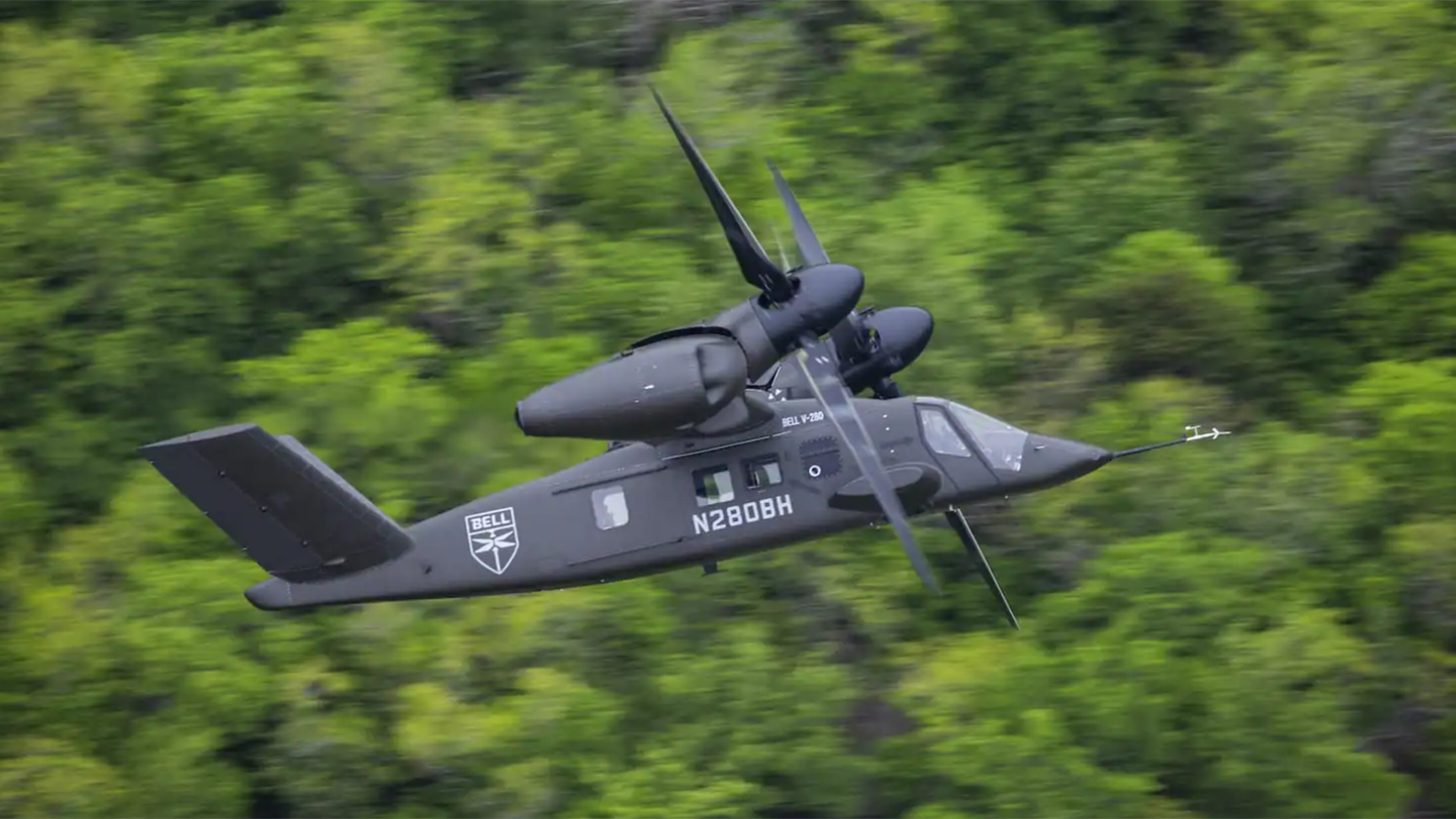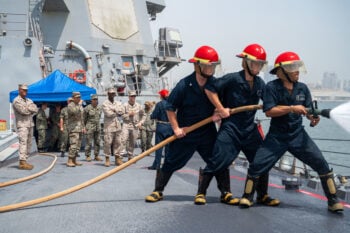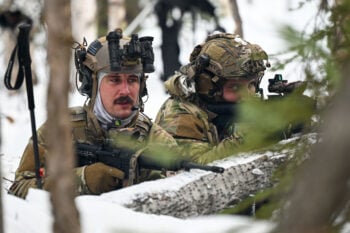
The V-280 Valor, Bell’s entry for the Army’s Future Long-Range Assault Aircraft, in flight. (Bell)
WASHINGTON — After years of development, prototyping and test flights, the Army today announced that Bell Textron’s Valor tiltrotor has won its Future Long-Range Assault Aircraft (FLRAA) competition to be the successor to the aging UH-60 Black Hawk and a key component of the Army’s future force.
The announcement gives Bell a massive victory not just in America but with the global community of 28 Black Hawk operators, many of whom are likely to follow the US Army’s lead when looking for a replacement in the future.
“I am excited to be part of this momentous day for our Army,” Douglas Bush, the assistant secretary of the Army for Acquisition, Logistics and Technology, said in a release. “The thoughtful and disciplined execution of the FLRAA program strategy will deliver the transformational capabilities we need to support the Joint force, strengthen deterrence and win in multi-domain operations.”
In a subsequent call with reporters, several Army officials provided additional details about the new contract. In total, they said, this current deal is worth up to $1.3 billion with the initial obligation valued at $232 million over the next 19 months.
RELATED: Three questions on what comes next following the Army’s FLRAA decision
Major General Robert Barrie, the Army’s Program Executive Officer for Aviation, said the initial dollar figure will allow Bell to continue onward with the preliminary design of the aircraft and deliver “virtual prototypes of a potentially model-based system.”
“There are zero aircraft being procured in the initial portion,” the two-star general said. If the aircraft moves into production, though, the program could soar up to $70 billion over its lifetime.
“This is an exciting time for the US Army, Bell, and Team Valor as we modernize the Army’s aviation capabilities for decades to come,” Mitch Snyder, president and CEO of Bell, said in a brief statement.
For the past several years, teams from Bell and Sikorsky-Boeing have been racing alongside each other for the high-profile contract, producing futuristic prototypes and logging flight hours. Army leaders were initially expected to announce the victor earlier this year but said they needed additional time to review the bids. Then on Nov. 21, Bush told reporters a decision would be announced by the end of the calendar year, saying the delay was simply due to the necessary “quality control” and “due diligence” associated with a contract “this big.”
The exact requirements the service laid out for the aircraft remain closely held, but allowed the companies to produce two strikingly different designs: Bell’s tiltrotor Valor aircraft against Sikorsky-Boeing’s coaxial rotor Defiant X.

Sikorsky’s Defiant X, its entry for the Army’s Future Long-Range Assault Aircraft, shown in flight. (Sikorsky)
It is unclear at this time if a contract protest will be filed, although given the magnitude of the FLRAA program, it would not be a surprise. A protest could potentially delay the Army on its quest to fielding the new FLRAA fleet around 2030, but service leaders said today they have factored a potential protest delay into the schedule.
The Sikorsky-Boeing team did not disclose if it would protest the decision but issued a brief statement after the announcement.
“We remain confident DEFIANT X is the transformational aircraft the US Army requires to accomplish its complex missions today and well into the future,” the team wrote in a statement. “We will evaluate our next steps after reviewing feedback from the Army.”
Over the weekend, Breaking Defense spoke with Rep. Rob Wittman, R-Va., at this year’s Reagan National Defense Forum. Wittman, a contender to chair the House Armed Services Tactical Air and Land Forces subcommittee, said he believes the FLRAA concept is based around “sound” technology, but said he wants to make sure the aircraft’s range is suitable for the vast distance in the Indo-Pacific region.
In that region, the tactical platform will be a connector and “the question is are there enough KC-46A’s, or whatever, to tank it in theater? We’d have to fly those in,” he said.
“I do think before they make the final award, they really need to examine those operational elements of the aircraft and figure out, does it work at all theaters, or does it just work in a European theater where…we have lots of land base facilities,” Wittman explained. “It’s a big deal to put a tanker up in the [Indo-Pacific Command], and get it to a FLRAA or [Future Attack Reconnaissance Aircraft] and get it refueled,” he later added.
Breaking Defense’s Aaron Mehta contributed this report.
TAI exec claims 20 Turkish KAAN fighters to be delivered in 2028
Temel Kotil, TAI’s general manager, claimed that the domestically-produced Turkish jet will outperform the F-35 Joint Strike Fighter.


























